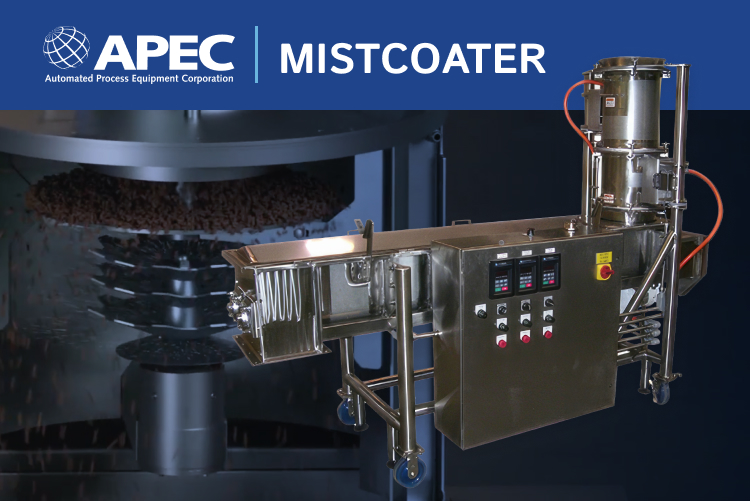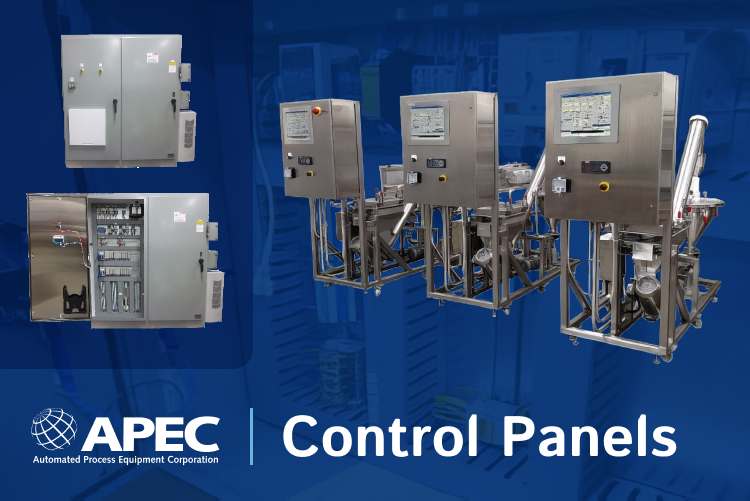
The Food Safety and Modernization Act (FSMA) created stricter food safety rules for farmers, growers, and food processors of all kinds. Compliance means preventing or dramatically reducing the chance of contamination, while non-compliance can result in FDA fines, consumer illnesses, and legal battles. Process design, planning, and controls play a key part in FSMA food safety compliance, as well as the everyday activities for food processors. The following are common FDA food safety risks that food processors and manufacturers face, many which can be prevented or minimized through proper process and system design.
8 FSMA Food Safety Risks Processors and Manufacturers Must Know
1. FIFO System Not in Place
When it comes to mixing and coating, perishable ingredients should be used on a first-in-first-out (FIFO) basis. This seems easy and logical at first glance, but a system that is not designed to ensure FIFO can easily pose FSMA food safety risks. A common and easy way to use bulk materials on a FIFO basis is through a silo or hopper which is refilled at the top and opened at the bottom. Gravity pulls the oldest materials towards the bottom, so they can be used first. However, there are some risks to this concept that must also be taken into account (see the next section).
Another common method to add ingredients is through bulk bags or super sacks. When bulk bags are shipped, they may be stored on the plant floor or loading dock until they are ready for use. If bulk bag shipments accumulate, the most recently delivered may be the most accessible, leaving older bags sitting for long periods. This can allow bacteria, mold, or pests to proliferate. The system for storing and using bulk bags and similar items must be clearly marked and employees should be aware of the importance of the FIFO system.
2. Dead Spots in Storage Tanks
Silos and hoppers appear to be the ideal FIFO system; filling from the top and taking from the bottom creates an automatic FIFO process. However, the tank must be designed to ensure that all the material is moving simultaneously, or dead spots can create FSMA food safety risks. Material segregation problems and flow problems can slow or stop movement in certain regions of the tank. This allows newer material to move through the tank too quickly, and causes older material to sit, inviting mold and bacteria over time. This will also create product consistency problems, as the ingredient may segregate based on particle size, viscosity, density, or other factors.
An angle of 70 degrees can help to ensure material flows evenly through a silo or hopper. Teflon coatings and stainless steel coatings can also help to promote flow. Highly disparate mixes that segregate within the storage unit may need additional mixing, smaller storage tanks, or separation prior to processing.
3. Equipment is Not Suitable for Clean in Place
Clean in place (CIP) equipment can be easily sanitized and decontaminated on-site. FSMA food safety regulations require that food processing machines be regularly cleaned. This prevents bacteria and mold from accumulating on wet, powdery, or greasy surfaces. It also prevents cross-contamination between batches.
CIP can be a challenge for equipment that also utilizes sensitive electronics, like load cells, or equipment with hard-to-reach places, like conveyance. Instead of avoiding the electronics in a machine while washing it—and thus creating potential for bacteria build-up—use hermetically sealed devices that prevent washing water from entering the enclosed device. Proper system planning and design can ensure that the system is equipped with sanitary, CIP conveyance, usually made from stainless steel.
4. High Oil Content Resists Microbial Heat Treatments
If you rely on heat to eliminate microbes, it is important to know the oil content of the product or ingredient mix. Oil creates a protective effect around some types of bacteria, making them harder to eliminate through heat alone. Soybean oil, olive oil, other vegetable oils and liquid paraffin, among others, are known to create this effect. This is an especially important consideration for animal feeds with high fat content. The build-up of oil on equipment or in the product itself due to inconsistent mixing can create harbors for bacteria.
Sterilizing washes designed to use on oil can eliminate heat-resistant microbes. Consistent mixing and regular testing can help to prevent pockets of oil from developing in the product which can shield bacteria.
5. Electronic Lot Tracking and Process Controls Don’t Integrate
Lot tracking is a critical FSMA food safety protocol. It helps to track the ingredients used in food processing, and it allows manufacturers, distributors and retailers to remove any contaminated products quickly. While electronic lot tracking systems have automated this process and helped to increase food safety enormously, they can be difficult to program or reprogram when the process or ingredients change.
Batch process controls that can be easily reprogrammed and integrate with your lot tracking system allow you to accurately track your products while giving you the flexibility to change your recipe as needed.
6. Food Safety Plan is Not Adaptive
Once you have a plan required by FSMA food safety rules, it’s tempting to consider the boxed checked and move on. However, just as your businesses and processes change to become more efficient, you food safety plan should also be able to recognize new threats and challenges. This might include new machinery and cleaning processes, new ingredients and potential cross-contamination or allergen risks, adding manual processes and increasing staff training, adding automated equipment, expanding processing operations or storage, and a number of other things.
If you have changed your operation in any way that affects how your product or ingredients are mixed, stored, handled or processed, it is important to also assess your food safety plan.
7. Insufficient Staff Training
FSMA food safety regulations require a safety plan and hazard analysis from a Process Control Qualified Individual. Some businesses contract with outside companies for this, others have a staff member dedicated to this role. However you choose to do it, this person should be trained to identify hazards, prevent them from happening, and change processes where appropriate.
Staff who handle food and ingredients or clean equipment should also receive training on the importance of FSMA food safety regulations. While it is important to explain what FSMA is, it is perhaps more important to explain why staff participation matters. This might be a common precaution such as using hair nets and clean gloves, or a job-specific duty such as adherence to FIFO, as mentioned in the first point.
8. Increased Mycotoxins Threats for Feed Producers
Mycotoxins produced by fungi in grain are particularly critical risks for animal feed producers, including livestock as well as pets. Recent increases in rainfall have increased the risks of mycotoxins in grains, making testing, sanitation and prevention even more important. All of the above FSMA food safety precautions, especially lot tracking and proper storage tank construction, can help to prevent the spread of harmful mycotoxins.
FSMA food safety regulations were designed to keep consumers safe and prevent the spread of illness. Food processors of nearly all sizes are now responsible for FSMA adherence, though there are many ways to accomplish this. Food processors and manufacturers should take note of these FSMA food safety risks, and pay close attention to system design when upgrading, expanding, or designing new facilities.







